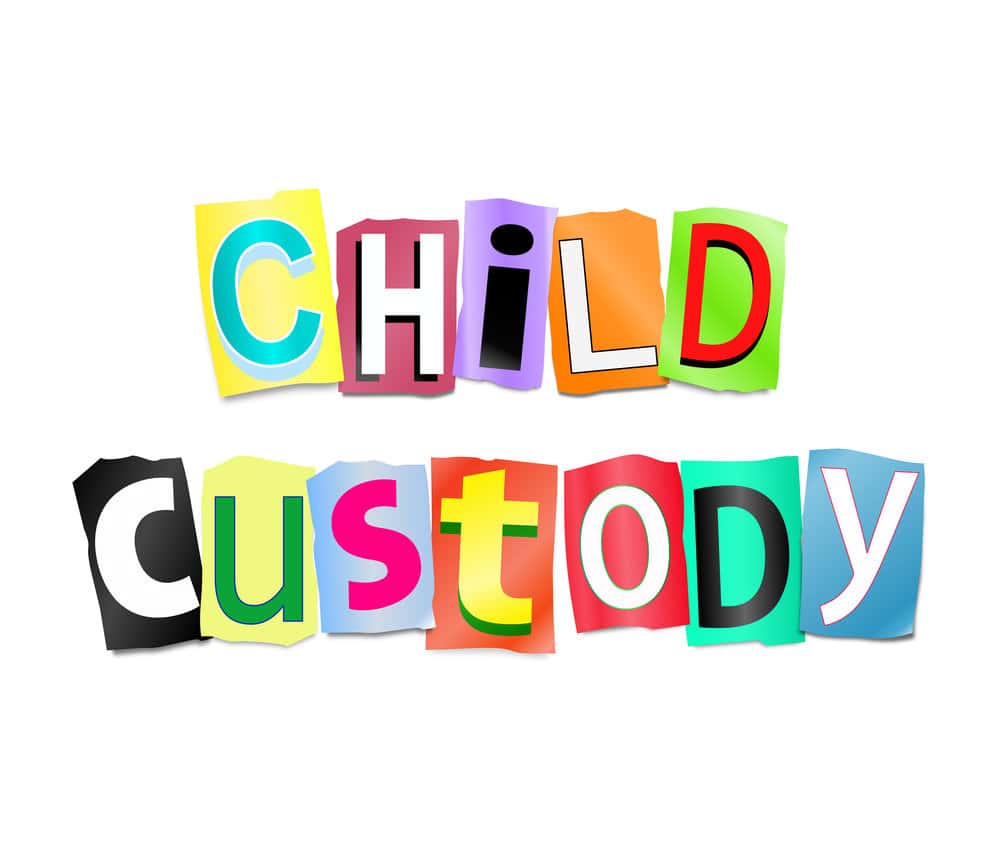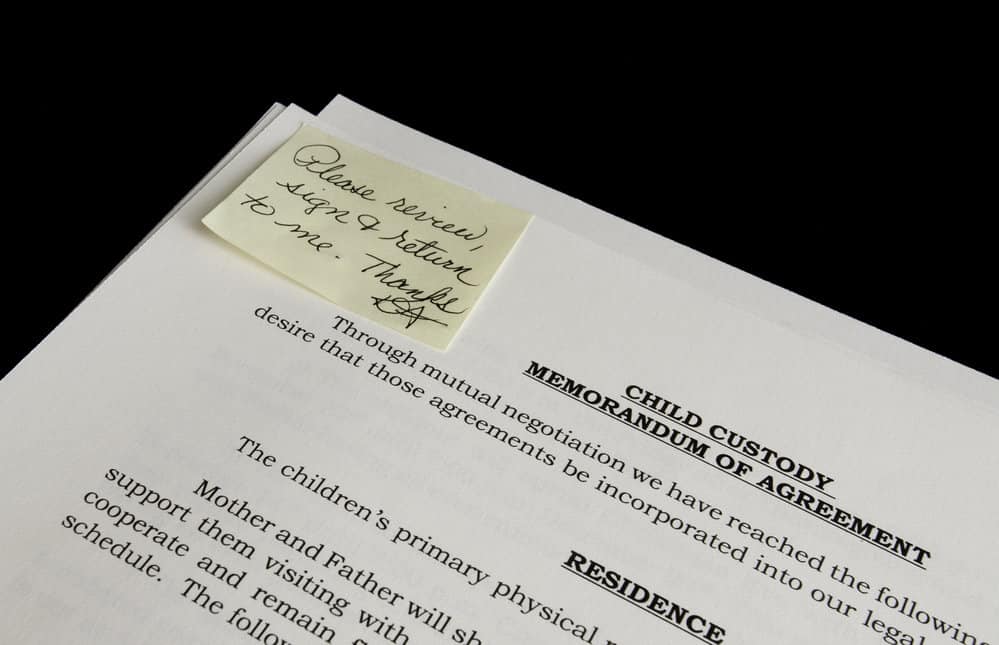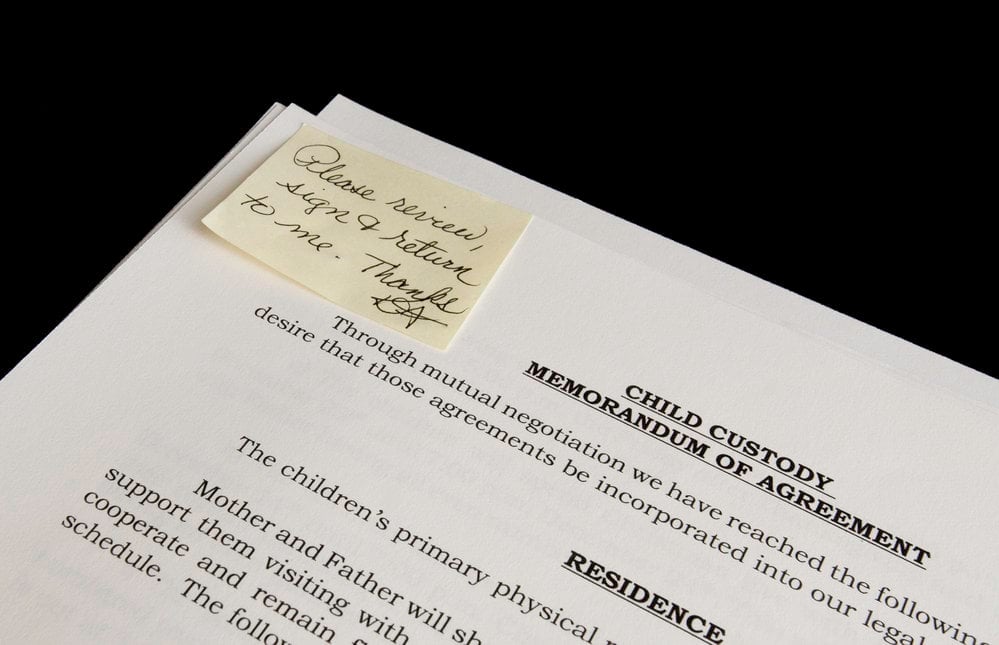Navigating the complexities of child custody arrangements can be challenging for parents. One of the most common misconceptions about joint custody is that 50/50 custody immediately designates a custodial parent. In reality, determining the custodial parent in a 50/50 custody arrangement depends on various factors and legal considerations that must be considered.
In a 50/50 custody arrangement, both parents share physical and legal custody of the child equally, which includes participating in decision-making and spending equal amounts of time with the child. However, despite the shared responsibilities, designating a custodial parent may be necessary to assume financial responsibilities, tax benefits, or complete legal documentation. Determining the custodial parent relies on the child’s best interests, considering factors such as parental involvement, stability, and the child’s emotional needs.
Key Takeaways
- In 50/50 custody, both parents share equal responsibilities and time with the child.
- Determining the custodial parent depends on the child’s best interests and various legal factors.
- Financial responsibilities, tax benefits, and legal documentation are some reasons why a custodial parent designation is necessary.

Understanding Custodial and Non-Custodial Parent
In a 50/50 custody arrangement, deciphering the roles of custodial and non-custodial parents can sometimes be tricky. To clarify the confusion, let’s delve into what these terms mean and how they apply in a shared custody scenario.
When defining the custodial parent, they usually take on the primary role of providing day-to-day care for the child. They are responsible for making important decisions regarding the child’s upbringing, such as schooling, healthcare, and religious practices. However, things get more nuanced when dealing with a 50/50 custody situation. In such cases, both parents share equal responsibility and decision-making authority for the well-being of their child.
On the other hand, a non-custodial parent typically has less time for hands-on parenting duties but still has the right to access information about their child’s welfare. They may maintain regular communication with the child and have visitation rights, but they won’t oversee the tangible details of the child’s everyday life.
Therefore, in 50/50 custody, the notion of custodial and non-custodial parents becomes somewhat blurred, as both parents share equal time and have collaborative decision-making authority. Yet, a designation may still be required within certain legal frameworks or official matters.
It’s important to note that the specific arrangements vary depending on each family’s unique circumstances. As such, reaching a fair agreement may involve open communication between the parents and, when necessary, seeking input from a legal professional.
Understanding the distinctions between custodial and non-custodial parents in a 50/50 custody setup can require careful navigation. By recognizing each parent’s valuable roles and embracing a cooperative approach, parents can work together to provide the best possible environment for their child to thrive.
Joint Custody and 50/50 Custody
Regarding child custody, various arrangements can be made between parents. Among these, joint custody and 50/50 custody are common options. Let’s dive into the world of these custody agreements and understand how they affect the role of a custodial parent.
Joint custody is a broad term encompassing both shared legal and physical custody. In cases of joint legal custody, both parents have an equal say in making significant decisions on their child’s upbringing – such as educational choices, medical treatments, and religious matters. In contrast, joint physical custody deals with the actual living arrangements of the child – where they spend their time and reside.
The concept of 50/50 custody refers to an equitable division of parenting time between parents, and it typically falls under the umbrella of joint physical custody. In a 50/50 arrangement, both parents share equal amounts of time with their child, often by alternating weeks or dividing their time in a way that suits their schedule. This type of custody ensures that the child maintains a strong and meaningful relationship with both parents.
However, it’s crucial to note that 50/50 custody isn’t always the right fit for every family. Several factors come into play, such as the child’s age, the parent’s work schedules, and the location of their residences. But when a 50/50 custody arrangement is feasible, it often leads to a more balanced parenting experience that benefits the whole family.
So, who is considered the custodial parent in a 50/50 custody agreement? The term “custodial parent” is typically associated with physical custody, but it can become somewhat ambiguous in cases of truly shared custody. In a 50/50 custody arrangement, both parents can be seen as custodial parents during their respective periods with the child. Additionally, parents share equal rights and responsibilities over their child’s care and well-being.
In conclusion, joint custody agreements come in various forms, with the 50/50 custody model as an increasingly popular choice. This arrangement provides a fair and equitable division of parenting time, ensuring parents remain actively involved in their child’s life. However, as with any child custody agreement, the primary concern should always be the child’s best interests.
Determining the Custodial Parent in 50/50 Custody
When it comes to child custody, it’s not always crystal clear who holds the primary responsibility. In situations where both parents share 50/50 custody, determining the custodial parent can involve various factors, ranging from the number of overnights each parent has to their role in decision-making.
One of the key factors in determining the custodial parent is the number of overnights each parent has with the child. The court often decides on a balanced schedule to ensure the child spends ample time with both parents. However, the primary custodial parent may emerge if one parent has a few more overnights than the other. Sometimes, one parent becomes the primary custodial parent despite a 50/50 custody split due to external factors, such as a job or housing requirements.
Another significant aspect when identifying the custodial parent is their involvement in major decisions for the child. While both parents have input on crucial matters, the custodial parent often holds more sway in decision-making. This includes decisions on educational choices, religious upbringing, and healthcare, which are essential components of the child’s well-being.
In 50/50 custody situations, creating a parenting plan to outline each parent’s responsibilities and privileges is paramount. After all, a well-structured plan solidifies the roles of both the custodial and noncustodial parent. This plan establishes specific arrangements such as visitation schedules, holidays, and communication protocols, ensuring that the child’s needs are met and that both parents understand their roles.
Even in 50/50 custody arrangements, it’s vital not to confuse the concept of joint custody with sole custody. The latter involves one parent having exclusive rights over the child, whereas joint custody allows both parents to participate actively in the child’s life. This distinction clarifies the responsibilities of each parent, preventing confusion and possible conflicts.
Determining the custodial parent in 50/50 custody is a complex yet crucial process. Keeping the child’s best interests at heart, a solid parenting plan and effective communication can pave the way for a harmonious arrangement that benefits all parties involved.
Child Support and Financial Responsibilities
In a 50/50 custody arrangement, parents share equal responsibility for their child’s upbringing. So, it’s natural to wonder how child support and financial responsibilities are divided in such situations. Let’s dive in to understand this better.
With 50/50 custody, parents usually bear equal expenses for the child’s day-to-day needs. However, depending on the parents’ income levels, child support payments could still come into play. If one parent earns significantly more than the other, the higher-earning parent might be required to pay child support to the lower-earning parent to ensure the child’s needs are met equally in both homes.
Calculating child support in 50/50 custody cases can be quite a complex process. Various factors impact the final calculation, such as each parent’s income, the child’s specific needs, and even local state laws. Generally, child support guidelines consider both parents’ incomes and determine a proportionate share of responsibility, keeping the child’s best interests at heart.
Some key aspects of financial responsibilities in 50/50 custody include:
- Ensuring both parents contribute to the child’s necessities, such as food, clothing, and shelter.
- Funding extracurricular activities, like sports or music lessons, to support the child’s growth and development.
- Considering their child’s healthcare costs, including insurance premiums, co-pays, and emergency treatments.
Communication between parents is crucial when managing their child’s financial needs. They should regularly discuss expenses and budgets to ensure both homes provide a consistent and stable environment for the child. Furthermore, maintaining a transparent and open conversation can alleviate potential misunderstandings or conflicts.
In conclusion, child support and financial responsibilities in 50/50 custody may vary depending on each parent’s income, the child’s needs, and state laws. Parents need to stay engaged in an ongoing dialogue and cooperate in fulfilling their child’s financial requirements to guarantee a loving and nurturing upbringing.
Tax Implications and Benefits
When it comes to 50/50 custody, there are several tax implications and benefits that parents should be aware of. It can be a bit confusing, but we’ve got you covered!
In most cases, only one parent can claim a child as a dependent on their tax return, regardless of the custody arrangement. This is where Form 8332 comes into play. The custodial parent, who has had the child for more than half the year, is usually eligible to claim the child as a dependent. However, with 50/50 custody, this situation gets a bit trickier. Parents can choose to alternate years claiming the child or one parent can agree to let the other claim the dependent consistently. Form 8332 allows the custodial parent to release his or her claim to the child for tax purposes, with the other parent able to claim the dependent instead.
Now, on to the good stuff – the tax benefits! The child tax credit is a significant one to consider. For taxpayers with a qualifying child, there is a tax credit of up to $2,000 per child. It’s essential to know that the parent who claims the child as a dependent can only claim this credit. So, with 50/50 custody, only one parent will be eligible for the child tax credit each year.
Another crucial consideration is the head of household filing status. Generally, this status provides a more significant standard deduction and lower tax rates than filing as single or married but filing separately. The head of household status is only available to the taxpayer with a qualifying child and provides more than half of the household’s expenses. In situations where parents have 50/50 custody, only one parent will typically be allowed to claim this status.
The earned income credit is another noteworthy benefit for those with dependents. This tax credit is provided to taxpayers with earned income below a certain threshold and who have a qualifying child. Like the other benefits discussed, only the parent claiming the child as a dependent can use the earned income credit.
In summary, 50/50 custody can impact the custodial parent’s tax situation, from Form 8332 requirements to claiming dependents and accessing various tax credits. Both parents can navigate these implications and benefits by understanding the intricacies of taxes and the IRS. Communication is key, and agreeing on a fair arrangement ensures that either party does not overlook eligible tax benefits.
When life circumstances change, and a custodial parent requires modification to their 50/50 custody arrangement, it’s essential to keep communication open and enlist the help of an experienced attorney. A knowledgeable professional can guide you through the necessary steps to ensure the process runs smoothly and fairly for all parties involved.
It’s not uncommon for parents to need modifications over time. Ideally, participating in open and honest communication can go a long way in helping both parents understand the need for change, especially when the children’s best interests are at stake. Resources such as mediation services or parenting coordinators can prove invaluable during this process, helping facilitate productive conversations.
As a custodial parent wanting to modify an agreement, it’s crucial to be completely transparent about the reasons behind the changes. The clarity in your intentions will foster mutual understanding and, hopefully, agreement, be it financial constraints, safety concerns, or varying needs as the child ages.
Should both parents agree on the modifications, the attorney can assist with drafting a new custody and support agreement. This document will outline revised terms and ensure that everything is legally binding. Following that, it should be submitted to the court for approval.
However, taking the matter to court might be necessary if the parents can’t reach a consensus. In such cases, a judge will evaluate the request for modification based on the child’s best interests and substantial changes in the parents’ circumstances. The judge may consider factors such as the stability of each parent’s home environment, the child’s wishes, or the ability to provide consistent care.
In conclusion, modifying a 50/50 custody and support agreement can be challenging, but it becomes far more manageable with clear communication, useful resources, and guidance from a skilled attorney. Remember to keep the child’s best interests at the forefront, and the outcome will likely be positive for all involved parties.
Legal Separation and Divorce
When couples face a legal separation or divorce, determining the custodial parent in a 50/50 custody arrangement can be challenging. It’s a time of emotional turmoil, and dealing with decisions that can significantly impact their and their children’s lives adds even more stress.
In cases of divorced or separated parents, reaching a custody agreement is like walking a tightrope. The objective is simple: to ensure the children’s best interests are at the forefront. A 50/50 custody arrangement implies that parents share equal responsibility and time with their children. Nonetheless, this doesn’t always clarify who the custodial parent should be.
At the very heart, each situation is unique. Various factors, such as the child’s age, living arrangements, and how well the parents can co-parent, come into play. In addition, the court may look at the parents’ financial stability and emotional well-being to make a fair decision.
Now, diving a tad deeper, it’s essential to understand that the term “custodial parent” generally refers to the parent with whom the child primarily resides. Although this might seem counterintuitive in a 50/50 custody situation, often, one parent is designated as custodial for legal or practical purposes. For instance, this designation might influence eligibility for child support or even determine which parent claims the child as a dependent on taxes.
To sum up, navigating the complexities of legal separation or divorce is no walk in the park. Identifying the custodial parent in a 50/50 custody arrangement might not be a cut-and-dried decision. Still, with empathy, understanding, and the right legal guidance, both parties can reach an agreement that ultimately serves the needs of the children involved. Ultimately, it’s all about building a solid foundation for their bright future.
Form 8332 and Release of Claim to Exemption
In cases of 50/50 custody agreements, determining the custodial parent for tax purposes can be a bit of a pickle. To clarify the issue, the Internal Revenue Service, or IRS, introduced Form 8332, Release/Revocation of Release of Claim to Exemption for Child by Custodial Parent. So, what’s the scoop on this form, and how does it relate to the custodial parent in 50/50 custody?
Form 8332 allows the custodial parent to release their claim to a dependency exemption for their child, letting the noncustodial parent claim it instead. Seems fair, right? By doing so, the noncustodial parent can take advantage of credits and deductions generally available to custodial parents only, like the Child Tax Credit, the Earned Income Credit, and the Child and Dependent Care Credit.
But there’s a catch! If the custodial parent chooses to revoke the release of claim for a given year, they must fill out a new Form 8332. You’d need to provide a court order or legally binding agreement stating that the custodial parent is reclaiming the exemption.
In cases where parents have a 50/50 custody agreement, the IRS may still need to identify a custodial parent for tax purposes, often using factors such as:
- The child’s primary residence
- The parent who provides more than half of the financial support
It’s essential to remember that Form 8332 plays a vital role in figuring out the tax implications for both custodial and noncustodial parents. Ensuring transparent communication and meeting obligations can help alleviate potential misunderstandings and make tax season much smoother.
Conclusion
Determining the custodial parent in 50/50 custody cases often depends on each family’s circumstances. In many instances, both parents share responsibilities, making it difficult to label one as the primary custodial parent definitively.
Nonetheless, several factors come into play when deciding which parent holds this role. These include the child’s best interests, the stability of each parent’s home environment, the ability of each parent to provide for the child’s needs, and the willingness of each parent to cooperate.
In some cases, the court may designate one parent as the custodial parent while still maintaining 50/50 custody. This decision is usually made to provide a clearer structure for child support and decision-making purposes.
It’s crucial for parents facing these decisions to keep communication open, seek legal counsel if necessary, and prioritize the well-being of their child. Mutual respect and understanding play significant roles in navigating this complex process. Ultimately, the focus should remain on providing a nurturing environment and a strong support system for the child, regardless of which parent holds the title of custodial parent.
Frequently Asked Questions
What determines a custodial parent in joint custody?
In joint custody situations, the custodial parent is typically the one with whom the child primarily resides. This parent makes day-to-day decisions about the child’s upbringing and well-being. It could be either parent, and the determining factors may include the child’s best interests, work schedules, or which parent can provide a more stable living environment.
How is the primary residence decided in 50/50 custody?
To determine the primary residence in a 50/50 custody arrangement, courts consider various factors, such as the child’s well-being, the stability of the living environment, and proximity to school, friends, or family. It may also involve negotiation and agreement between the parents, aiming to minimize potential disruptions in the child’s routine.
Can both parents be considered custodial in shared custody?
Indeed, in shared custody scenarios, both parents may assume custodial roles and responsibilities. This arrangement recognizes that both individuals play essential roles in the child’s upbringing and development. Shared custody promotes ongoing communication and cooperation to ensure the child’s seamless and positive parenting experience.
What impact does the custodial parent status have on child support?
The custodial parent status has a significant effect on child support. Often, the non-custodial parent is required to provide financial assistance to the custodial parent to help cover the costs of raising the child. The amount of support varies depending on the non-custodial parent’s income, the child’s needs, and the other parent’s financial situation.
How do courts decide on the custodial parent in cases of equal parenting time?
The courts examine the child’s best interests in cases with equal parenting time to determine the custodial parent. This may involve assessing each parent’s living situation and the stability they can provide, evaluating their relationships with the child, and considering other factors affecting their well-being.
Can custodial parent status change after a 50/50 custody agreement?
Depending on the circumstances, the custodial parent status can change after a 50/50 custody arrangement. Suppose there has been a significant change in one parent’s situation, such as a job loss, relocation, or the development of health problems. In that case, the courts may alter the agreement to reflect the child’s best interests and meet their needs.






